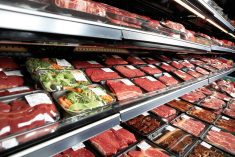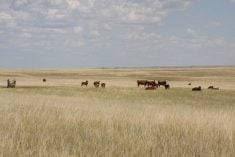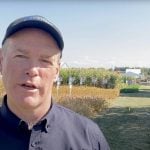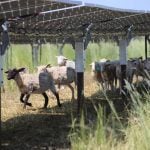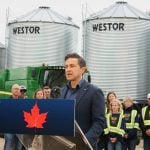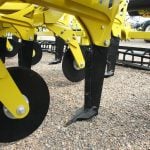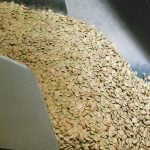For more than 50 years, Charles Melville Williams, known universally as “Red,” has been a prominent player in prairie agriculture.
He has donned many hats during his long career: teacher; livestock researcher; extension specialist; media commentator; political activist; foreign aid worker; consultant and member of countless boards and committees.
How has he managed to be so involved in so many things over the course of his career?
“Because I’ve lived a lot of years, that’s why,” he says with a laugh.
At age 82, Williams is still serving on the front lines, as president of Saskatchewan Agrivision Corp., an organization devoted to promoting the development of the province’s agribusiness sector.
Read Also

August rain welcome, but offered limited relief
Increased precipitation in August aids farmers prior to harvest in southern prairies of Canada.
Born in Richardson, Sask., in 1925, he earned a doctorate in animal science from Oregon State University, specializing in genetics and physiology.
After working as district agriculturalist in Kamloops B.C., he joined the University of Saskatchewan as an assistant professor of animal
science in 1954 and quickly gained a reputation for his teaching and communications abilities.
He made his first big impact on the livestock industry by taking on the issue of dwarfism in beef cattle. In the early 1950s, the industry was looking for beefy, smaller animals, a process that eventually led to a surge of dwarfism.
“I did a lot of work very early in my career to deal with that,” Williams said, recalling he had expertise in using a specialized machine that correlated the size of a bull’s head with the presence of the dwarfism gene.
In the early 1970s, Williams was one of a small group of experts who worked on a project to boost the profile of farming among aboriginal people.
The result was the creation in 1975 of the Saskatchewan Indian Agricultural Program.
“That was really the beginning of a structured approach to develop agriculture on reserves,” he said.
When the program started in the 1980s there were fewer than a dozen bona fide aboriginal farmers in the province. By the time it was wound up in the 1990s, there were more than 600.
Over the years Williams conducted research in a wide variety of areas, including the use of windbreaks, overhead shelter and straw bedding in cattle feedlots, dairy cow performance under different housing conditions and the impact of breed and environment on hair coat density.
One area of work of which he is particularly proud is in the field of animal welfare. He was instrumental in setting up the first expert committee on animal welfare and behaviour under the auspices of Agriculture Canada.
That work culminated in the first formal code of ethics for livestock production, something that has helped the industry deal with pressure from animal rights extremists.
Williams says that when he started his academic career, he never thought it would lead him down so many roads.
Probably the key to that was a decision early in his career at the university to focus much of his time and effort on extension work, something that got him out of the “ivory tower” and put him in touch with farmers and the issues that concerned them.




